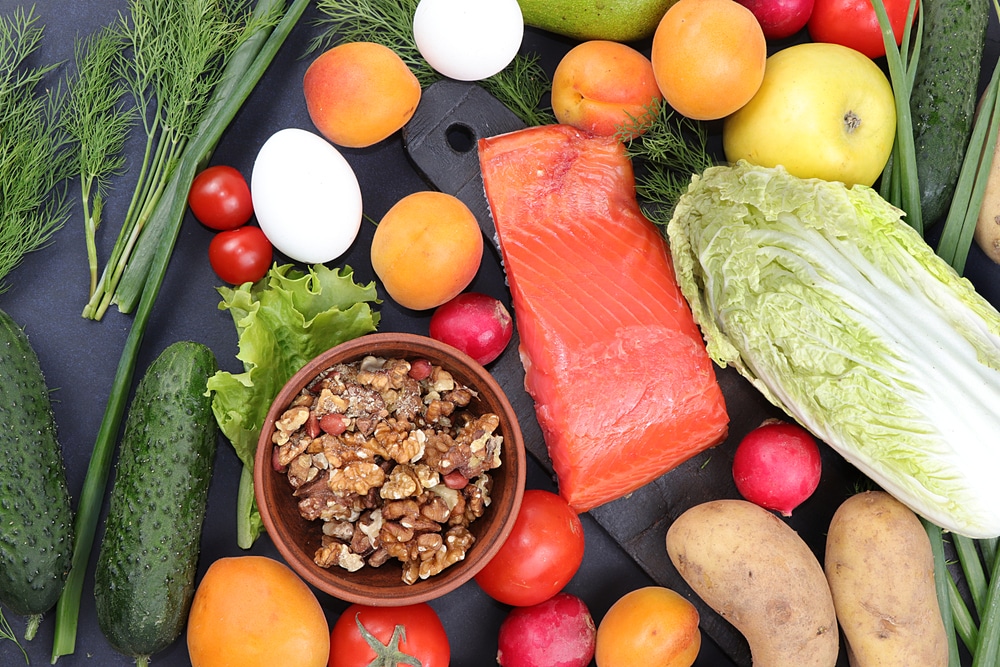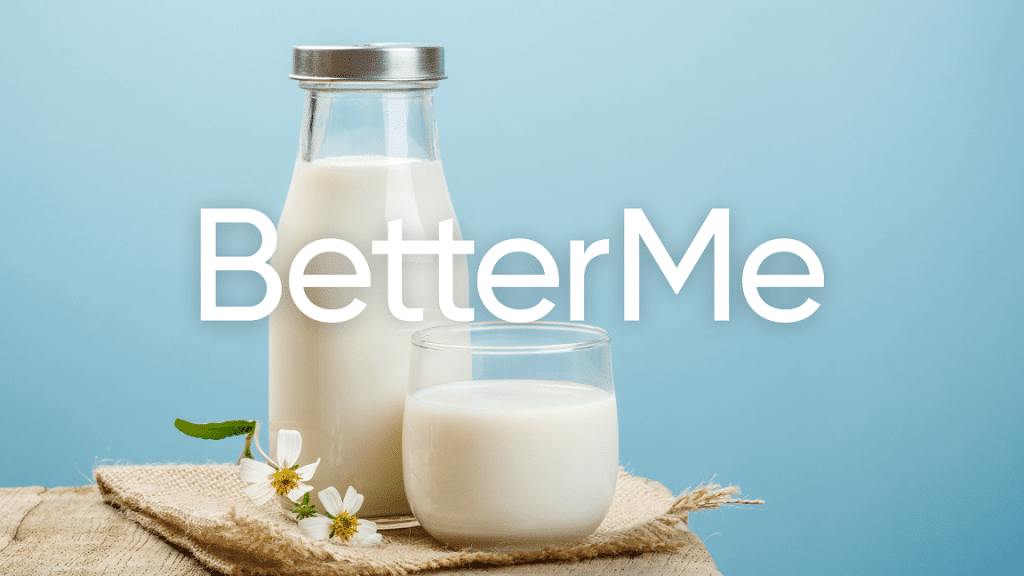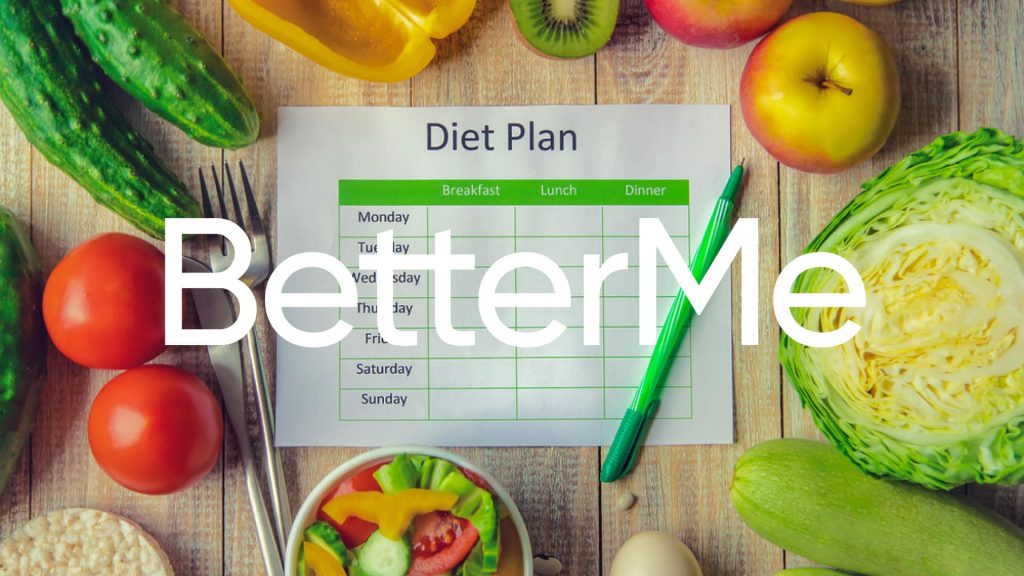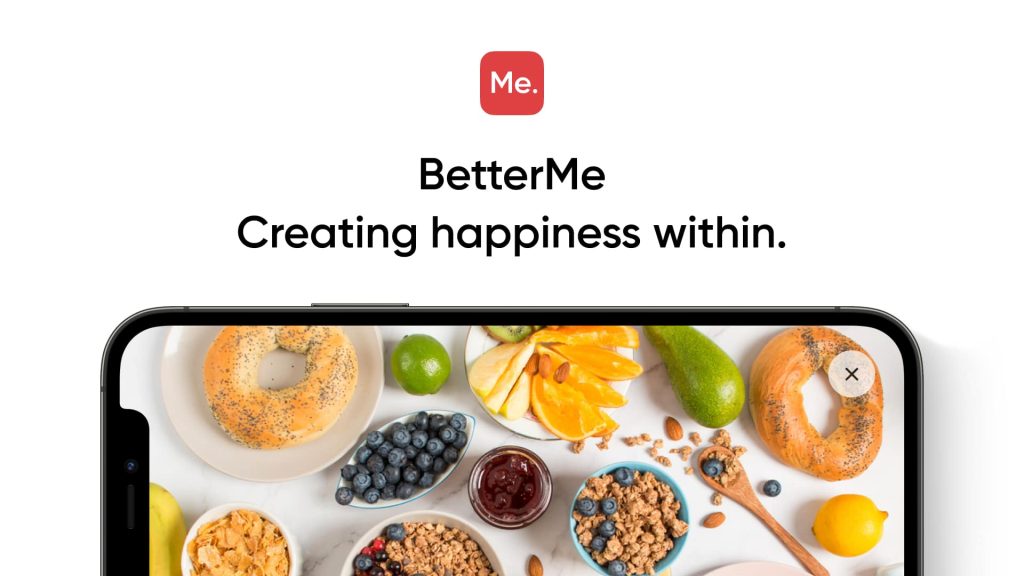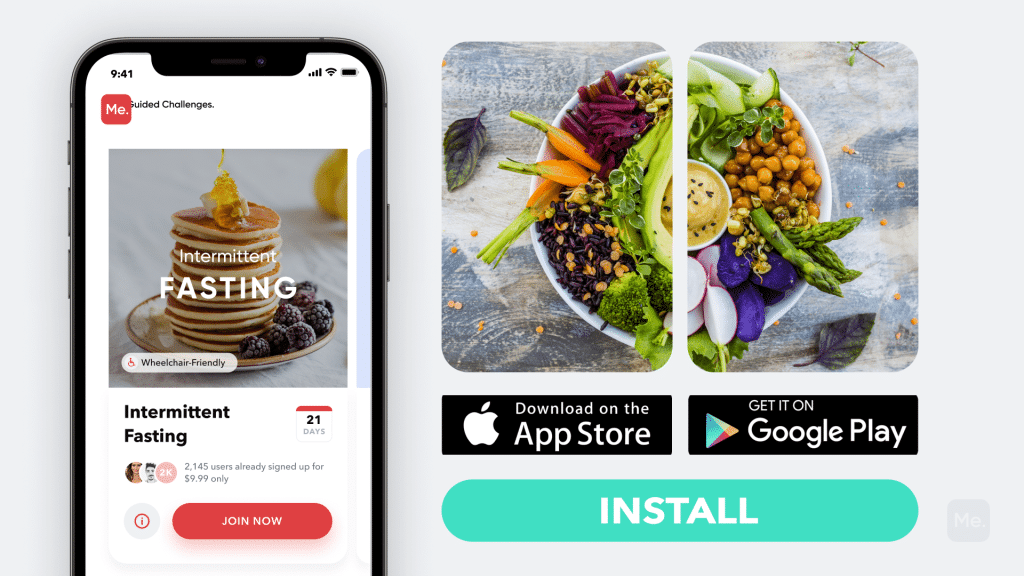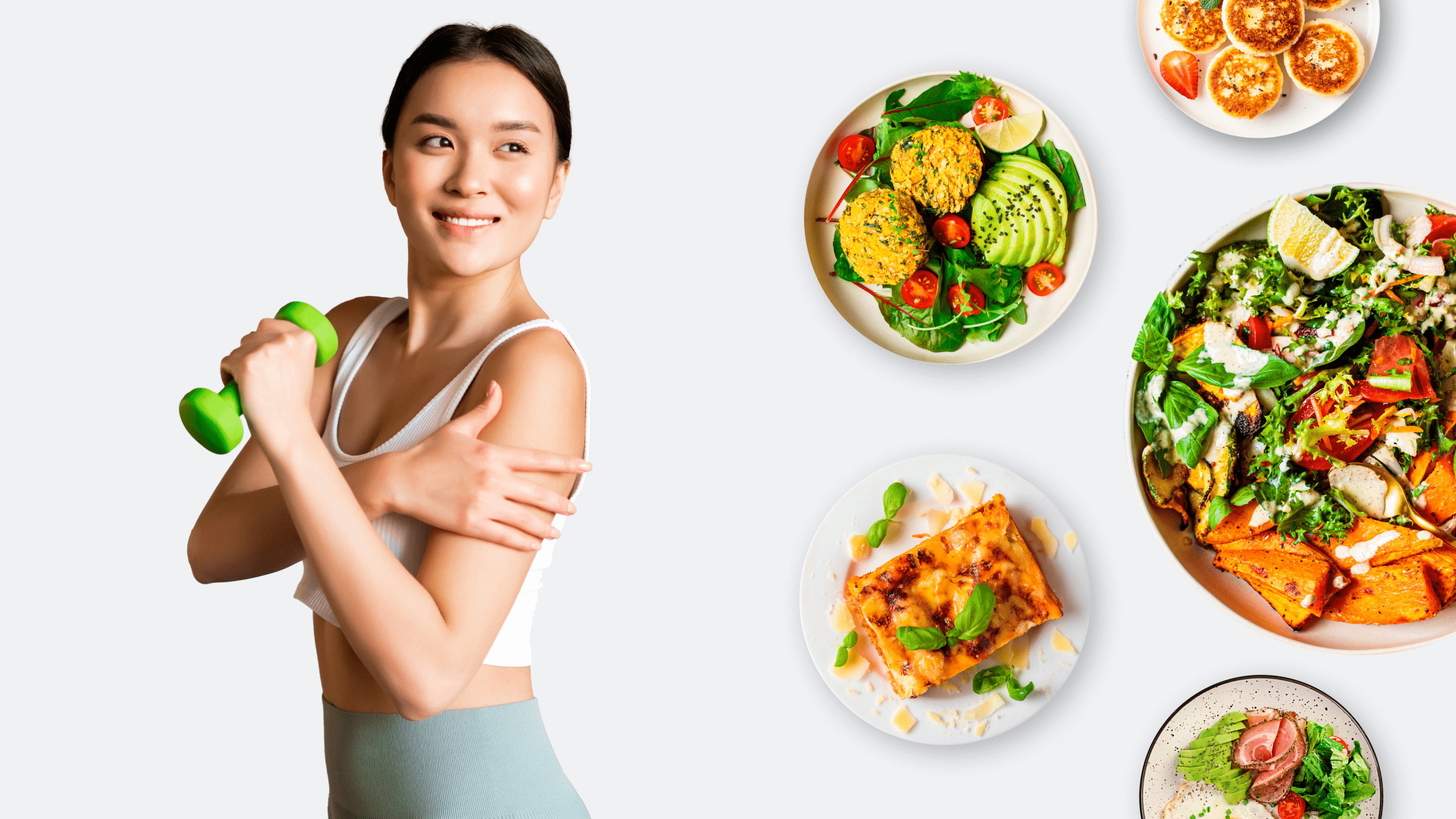Elimination Diet
Before you delve into it first, you have to ask yourself, what is the elimination diet? Simply put, a food elimination diet is a strategy for testing a person’s food sensitivities.
There are many types and variations of elimination diets. The basic ones are based on eliminating gluten and dairy for a few weeks, but others are stricter. Generally, elimination diets aim to avoid common foods known to cause sensitivities and then reintroduce them into the diet one after the other. The aim is to identify whether certain trigger foods cause inflammation, headaches, skin issues, and other side effects (3).
Understanding Food Allergy Vs. Intolerance
Although sometimes used interchangeably, food intolerance is not the same thing as an allergy. The two phenomena may present similar symptoms, thus making them easy to mix up. Having an allergy means that your body’s immune system reacts to the food, which can be acutely life-threatening. On the other hand, food intolerance arises from a sensitivity or trouble with digesting a particular food.
Note that severe food allergies are not something you can self-diagnose or even ignore. In cases where you suspect having an allergy, you should see a certified allergist immediately so that the issue is diagnosed and the best course of action is taken (6).
Read More: Creating A Diet Plan: A Detailed Playbook On Finding Your Own Dieting Rhythm
Should You Try An Elimination Diet?
As indicated earlier, before you commit yourself to an elimination diet, you should first explore whether you are suffering from an allergy or food intolerance.
If you are experiencing headaches, constipation, fatigue, heartburn, bloating, or trouble swallowing, you may have a food intolerance. It is typical for such symptoms to worsen 1 to 3 hours after taking a meal. In most cases, the timing makes it difficult to know whether the diet or something else is causing the problem.
Those suspecting they may be having an allergy may undergo blood and skin tests. However, such a diagnosis may not always provide the answer to your question. In such a case, a doctor will have to recommend a food challenge to confirm food sensitivity (5).
A food challenge is whereby a doctor administers small portions of the possible food trigger and then observes you for the symptoms. This is believed to be the best practice when diagnosing allergies.
To establish food intolerance, you can use an elimination diet. This is achieved by taking out a group of foods from your diet for a specified duration and then reintroduce them one by one to determine the ones that are causing you to react. For best results, you ought to do this under the guidance of an allergist.
Tips For Surviving An Elimination Diet
Adopting an elimination diet is not as easy as it sounds. While implementing it, you will have to stop consuming alcohol, sugar and caffeine, and common allergens, including dairy, gluten, eggs, corn, and soy, and then reintroduce them slowly (9).
Even though the premise is simple many people struggle to completely abstain from foods that have been part of their diet for a very long time. The tips to help you survive an elimination diet plan include:
-
It Takes Time To Prepare
You want to try an elimination diet: how long should you take to prepare? Don’t get into an elimination diet before knowing what it is all about. Devote a few days to experiment with some foods, products, and snacks to see what works for you before you begin the diet. Planning is therefore aimed at identifying and understanding your options. This way, you will determine the foods and recipes you can still enjoy as you continue the elimination process (8).
-
Hit The Farmer’s Market
Visit the farmer’s market so that you stock your fridge with fresh whole foods as you get rid of the processed and packaged alternatives. This way, you will be sure that the foods you consume are gluten-free, even without labels.
-
Elimination Diet: Keep Your Blood Sugar Stable
You may find it challenging to remain on track if you don’t keep your blood sugar stable. To achieve this, you will maintain a balance of healthy fats, proteins, and carbohydrates at every meal, thus avoiding extreme blood sugar fluctuations. Fortunately, there is a variety of delicious foods to choose from when going for an elimination diet (12).
-
Be Realistic With Your Social Schedule
The elimination diet must be in sync with your social schedule; otherwise, you may find yourself at crossroads way into the diet. Make plans for significant events scheduled around the time of your diet in advance. There may be occasions for things such as birthday cakes that will tempt you. The remedy for this is planning your diet around major milestones or carrying your treats to social events.
BetterMe app will kick you out of the mental funk, shake off your extra weight, rid you of your energy-zapping habits, and help you sculpt the body of your dreams. Intrigued? Hurry up and change your life for the better!
-
Elimination Diet: Get Creative With Your Recipes
An elimination diet may sound as if you will only be eating salad after salad making it sound uninteresting. However, there is always room to be inventive and come up with delicious recipes. For instance, many egg-free or gluten-free breads are not as tasty as wheat-based ones. However, you can still bake your bread with whole-grain and a range of different ingredients to make it more appealing (7).
-
Remember To Rotate
You may find a particular type of food you like that fits your restrictions and be tempted to eat it over and over again. It does not matter if it is only the elimination diet breakfast. If you want to achieve optimal health, then there is no option other than rotating. Develop a three-to-four-rotation plan which will have a minimum of three different breakfast, lunch, and dinner ideas.
-
Elimination Diet: Stay Hydrated
Sometimes people tend to eat unnecessarily because they mistake thirst for hunger. To avoid this, develop a habit of drinking plenty of water during the diet and beyond it.
-
Pace Yourself
During the phase where you start to reintroduce foods, you may be tempted to splurge on things like ice cream and pizza. The only way you will know the particular ingredient causing your symptoms is by re-introducing each food individually. Set reminders to reintroduce specific foods, so they do not coincide, and ensure that they are spaced out by several days.
-
Consult A Professional
There should be no compromise when it comes to professional guidance. Remember that elimination diets are not only complicated, but they can also be very challenging. Due to the many roadblocks in implementing the diet, many people fail to achieve the results they are looking for. The professional will be there to walk you through the challenges to complete the elimination diet as intended (1).
How To Do An Elimination Diet?
Before starting an elimination diet, develop a food and symptom diary, which will help identify the connection between eating habits and symptoms. From there, it will be easier to know which foods you should try to eliminate.
Implementation of an elimination diet is made possible by having a plan in place. There are many variations of an elimination diet plan, with some being full while others are partial. In a complete elimination diet plan, one has to take out more than eight foods from the diet simultaneously. It may be cumbersome or even challenging to adjust to eliminating so many foods instantly. This can also deprive the body of useful nutrients.
The most preferred plans are those that only eliminate three or four foods at a time for three weeks. The 21 days are enough for you to notice any changes in your symptoms. After 21 days, you will be feeling better only if you have found the right trigger. It is at this stage that you start to reintroduce the eliminated foods one after the other. There ought to be a window of at least three days after introducing a food to assess the body’s reaction to the food before trying another one (3).
If you show no symptoms after adding all the foods, you proceed to the next step of the plan to eliminate another group of foods. Continue repeating the process until you find a food that causes the symptoms. That will be the trigger you have been looking for.
Naturally, You Will Stop The Elimination Diet At That Point
However, there may be a chance that there is more than one food at fault. It is advisable to continue with the plan, but this time, start by eliminating the most common offenders and then move to the less common ones.
You should consult with your doctor during each phase of the plan and practice extreme caution with packaged foods by going through the labels to find out if they contain ingredients you are trying to avoid. If you are eating out, inquire from restaurant staff about your dish’s contents before you eat.
If you are worried about the risk of going hungry when avoiding some foods, that should not be a concern. In case you are feeling hungry, you can always eat things like fruits, vegetables, or even healthy fats like coconut and avocado (10).
Read More: 8-Week Diet Plans: Mix-And-Match Meal Ideas That’ll Help Your Lean Out In a Few Short Weeks
Elimination Diet Plan Sample
In the first part of every phase, eliminate all the listed foods from the diet and then add them back one after the other. There should be a window of three days before you add the next food to examine if there are any symptoms.
1st Phase
- Day 1 to 21: Eliminate Eggs, Soy, Gluten, Dairy
- D-22 to 24: Add back Eggs
- Day 25 to 27: Add back Eggs, Soy
- D-30 to 32: Add back Eggs, Soy, Gluten
- Day 33 to 35: Add back Eggs, Soy, Gluten, Dairy
2nd Phase
- Day 36 to 58: Eliminate Corn, Shellfish, Peanuts
- D-59 to 61: Add back Corn
- Day 62 to 64: Add back Corn, Shellfish
- D-65 to 67: Add back Corn, Shellfish, Peanuts
Elimination Diet: 3rd Phase
- Day 68 to 90: Eliminate Fish, Tree Nuts
- D-91 to 93: Add back Fish
- Day 94 to 96: Add back Fish, Tree Nuts
4th Phase
- D-97 to 103: Eliminate Artificial Dyes, Artificial Sugars, Preservatives
- Day 104 to 106: Add back Artificial Dyes
- D-107 to 109: Add back Artificial Dyes, Artificial Sugars
- Day 110 to 112: Add back Artificial Dyes, Artificial Sugars, Preservatives
Lean and toned up body isn’t just a far-fetched fantasy. Check out the BetterMe app and watch it propel your weight loss journey into high gear!
Elimination Diet Meal Plan
The meal plan is simply to guide you on what to eat on an elimination diet. You may pick foods that belong to the same group as the ones included here (3).
1st Phase (Day 1 to 21)
- Breakfast: Oatmeal with almond milk, sliced almonds, berries, non-dairy milk tea (such as coconut or almond).
- Lunch: A large salad includes avocado, tomato, jalapenos, onions, spinach, peppers, hemp seeds, olive oil, nutritional yeast, spirulina.
- Snack: Half a cup of raw nuts and seeds with an almond milk cappuccino.
- Dinner: Chickpea stew with leftover salad from lunch and a cup of cooked brown rice.
- Dessert: A few pieces of non-dairy extra dark chocolate.
2nd Phase (Day 36 to 58)
- Breakfast: A green smoothie comprising blended coconut/rice milk, almond, spinach, berries, and chia seeds.
- Lunch: Black bean and spinach burger; prepare by mixing cooked black beans, oatmeal, spinach, cumin, salt, onions, black pepper, and garlic.
- Snack: A handful of raw cashews and one cup of coconut water.
- Dinner: Vegetables and roasted sweet potato in marinara sauce.
- Dessert: 2 almond butter oat balls; mix rolled oats, dark chocolate chips, and almond butter and make 2-inch balls.
3rd Phase (Day 68 to 90)
- Breakfast: Sprouted tofu scramble, green tea, and berries.
- Lunch: Apple, kale, and a salad.
- Snack: A handful of seeds.
- Dinner: Grilled mushrooms (Portobello) marinated in balsamic vinegar, onion, and garlic. Serve with quinoa pilaf.
- Dessert: A gelato made of half a cup of frozen cherries and full-fat coconut milk.
4th Phase (Day 97 to 103)
- Breakfast: Chia seed pudding; mix coconut milk, chia seeds, sliced almonds, and strawberries. Refrigerate overnight.
- Lunch: Baked mushrooms (Portobello) mixed with diced tomatoes, onions, pepper, and cheese.
- Dinner: Quinoa with kale, sautéed mushrooms, and cubed sweet potato.
- Dessert: Mix berries with unsweetened coconut flakes, basil, and lime juice.
Benefits Of An Elimination Diet
Apart from helping you identify the foods that cause you uncomfortable symptoms, an elimination diet has several other benefits, including (2):
-
It May Reduce Symptoms Of Irritable Bowel Syndrome
Irritable bowel syndrome (IBS) is a common gut disorder that affects close to 10-15% of people worldwide. The elimination diet has been shown to improve IBS symptoms like bloating, stomach cramps, and gas.
-
May Help With Eosinophilic Esophagitis
This is a chronic condition in which allergies trigger inflammation of the esophagus- the tube through which food moves from the mouth to the stomach. This makes it challenging to swallow dense and dry foods, thereby causing the risk of choking. The elimination diet comes in handy by improving the symptoms of this condition (4).
-
Reduction Of ADHD Symptoms
Attention-deficit/hyperactivity disorder (ADHD) is a behavioral disorder that affects both children and adults. Elimination diets have the potential to reduce the symptoms of this disorder. It reduces symptoms, especially among people who are sensitive to foods. Children should not be put on an elimination diet without the supervision of a medical practitioner.
-
Improvement Of Skin Conditions Like Eczema
Skin conditions like Eczema make the skin appear red, inflamed, cracked, and itchy. Many different things cause such situations, but a certain food consumption can worsen the symptoms associated with them. It is for that reason that elimination diets can reduce the symptoms of conditions like Eczema (11).
-
Reduction Of Chronic Migraines
Millions and millions of people from all over the world suffer from chronic migraines. While the exact cause of migraines is unclear, inflammation is believed to be one of the triggers. In this case, an elimination diet will remove those foods that cause inflammation, thus reducing migraines.
Are There Any Risks Associated With Elimination Diets?
Sometimes you may find yourself asking questions such as, why am I so tired on an elimination diet? Well, you ought to be prepared for a few risks when you go down this route. Some of these risks are:
- It is advisable to adopt an elimination diet only for a short period that is eight weeks or less. Following the diet for a longer period than that could result in nutrient deficiencies due to the obvious reason that you have eliminated certain food groups (2).
- Children should only be put on an elimination diet under the supervision of a doctor. Eliminating food groups even for a short duration of time could end up stunting a child’s growth.
- Children are also at a higher risk of having severe reactions such as anaphylaxis during the plan’s reintroduction phase.
The Bottom Line
The first thing that comes to most people’s minds when a diet is mentioned is weight loss. This is not the case with an elimination diet. It is a meal plan that removes certain foods to establish what you are sensitive or allergic to. Before you adopt such a diet, please consult your doctor to ensure it is the best course of action to take. Children should not be put on such a diet because it deprives them of essential nutrients necessary for their growth.
DISCLAIMER:
This article is intended for general informational purposes only and does not address individual circumstances. It is not a substitute for professional advice or help and should not be relied on to make decisions of any kind. Any action you take upon the information presented in this article is strictly at your own risk and responsibility!
SOURCES:
- Assessing Adherence and Barriers to Long-Term Elimination Diet Therapy in Adults with Eosinophilic Esophagitis (2018, ncbi.nlm.nih.gov)
- Benefits and risks of elimination diets (1999, pubmed.ncbi.nlm.nih.gov)
- Elimination Diet (2020, webmd.com)
- Eosinophilic esophagitis (2020, mayoclinic.org)
- Food allergy (2019, mayoclinic.org)
- Food allergy vs. food intolerance: What’s the difference? (2020, mayoclinic.org)
- Food & Recipes (2021, webmd.com)
- Food elimination diets are effective for long-term treatment of adults with eosinophilic oesophagitis (2017, pubmed.ncbi.nlm.nih.gov)
- How the Low FODMAP Diet Changed My Life (2017, nbcnews.com)
- 10 superfoods to boost a healthy diet (2018, health.harvard.edu)
- What to know about eczema (2020, medicalnewstoday.com)
- Which foods help stabilize insulin and blood sugar? (2019, medicalnewstoday.com)

